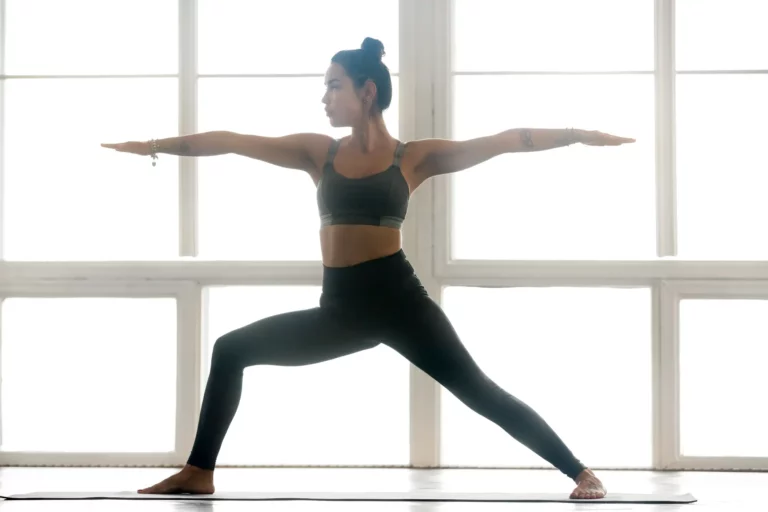Do You Need To Take Rest Days From Yoga?

Most workout programs recommend taking a day off at least once every few days to allow your body to recover. However, yoga is a kind of physical exercise that revitalizes and relaxes the body. So, is it really necessary to take rest days off your regular yoga practice?
You need to take rest days from yoga to give your body and mind the opportunity to recover from the stresses of regular physical practice. Some forms of yoga and specific asanas can be pretty strenuous, and resting once a week can help significantly improve your practice.
Before we begin, let’s state that not all forms of yoga require the same amount of physical exertion, and some types may require fewer rest days. In this article, we’ll explore why it’s necessary to take rest days, what you can do while resting, and how to schedule the ideal break.
Why Rest Between Yoga Sessions?
Once you have a regular yoga practice in motion, taking a break can feel uncomfortable, especially if you find setting up a regular yoga routine challenging. However, once you’ve made yoga a habit, it’s best to integrate rest days into your routine, as these breaks will significantly improve your practice.
You need to rest between yoga sessions so that your body has time to repair minor tears and stresses that are a natural byproduct of regular asana practice. A solid yoga session also requires considerable mental energy in the form of focus and concentration, and rest days can help rejuvenate your mind.
It doesn’t matter whether you’re into hatha yoga or power yoga; it’s always crucial to incorporate periodic rest days into your monthly yoga routine.
How To Plan Your Yoga Rest Day
Most people see ‘rest days’ as a free pass to do anything they like. Sure, eating a pizza on the couch while binging your favorite Netflix series may sound great, but these poor habits can make it harder for your body to recover properly.
If you’re used to doing yoga first thing in the morning, build another healthy habit into that time slot, ensuring that you don’t lose the connection with your mind and body. If you prefer yoga in the evening, figure out something else to do around this time that won’t involve eating junk food or mindlessly scrolling through social media.
Instead of succumbing to temptation, work one or two other healthy habits into your rest day to keep the healthy momentum going. Here are a few ideas to get you started:
- Learn to cook a new healthy meal that will nourish the body and mind with the essential nutrients.
- Read an engaging book of any genre you prefer so your mind can be mildly engaged without getting too excited.
- Spend time with your family and friends, engaging in activities that the group enjoys.
- Take a short walk out in nature because walks can help clear the mind.
- If you have a pet, take a chunk of your rest day to spend time with them.
- Write out your weekly grocery list and get everything you need to have more time during the week.
While it’s not essential to be productive on a rest day, it’s best to keep yourself engaged in some healthy activity to avoid getting drained out. You can improve your yoga practice and overall health by scheduling better rest days into your routine.
When To Take a Rest Day
Here’s the tricky part. When exactly should you schedule a rest day in your practice?
Once a week? Second Saturdays only? The days you just aren’t ‘feeling’ it?
Unfortunately, each of these conditions is applicable in different circumstances. The day you choose to rest will depend entirely on your schedule, body type, practice goals, and practice level.
Most people are free from work on the weekends and may decide this is the best time to take a break from their yoga sessions. For others, the weekend is all about preparing for the coming week, and yoga may be an essential element in their preparation.
If your goal is to keep a consistent yet moderate yoga practice, you may consider taking a break every two or three days. However, let’s say you’re looking to go deeper into your asana practice, make your body more supple, and achieve some level of enlightenment. In that case, you’ll probably have to dedicate more time to yoga.
Additionally, if you’re starting to build a regular practice, doing yoga every day may be pretty challenging. In the beginning, it’s best to pace yourself and take a break every two or three days so your body can gradually get used to the different postures and flows.
Your Rest Depends on Your Yoga Type
Finally, your rest days will also depend on the style of yoga you practice.
For example, Hatha yoga is quite gentle, and you may require only one rest day a week to recover from fatigue.
Ashtanga yoga is a more powerful, dynamic style of yoga and can be somewhat strenuous on the body. A day off every week is essential, even for experienced practitioners. If you’re starting with Ashtanga yoga, it’s best to give yourself two days a week to recover.
On the other hand, a gentle flow like Yin yoga is best performed on your rest days to enhance your body’s healing abilities.
Yoga Has Its Rest Days
Most schools of yoga specify their rest days, and you’ll find that experienced practitioners who have studied at a yoga ashram are highly aware of when to take a break from their practice.
- Traditionally, Saturday is the rest day for Ashtanga yoga, and most other schools also schedule breaks over the weekend.
- Experienced yogis also claim that it’s best to rest on ‘moon days,’ during the new moon and full moon, as the body’s flow of energy gets disrupted, and this disturbance can become more pronounced during yoga.
- It’s also crucial for women to keep track of their menstrual cycle and avoid practicing yoga for two or three days during their period.
These are typically the rest days recommended by most schools of yoga. This means four Saturdays a month, two moon days, and perhaps another two days during your period. Men may also consider taking two extra days off during the month as an opportunity to recover appropriately.
However, once you’ve been practicing yoga for a while, it’s best to rely more on your intuition and judge whether your body needs a break or if you can still keep pushing. This intuition will come more naturally as you deepen your understanding of your yoga practice.
Read my guide 6 Ways To Make Your Yoga Routine Actually Stick to help you with your routine.
Final Thoughts
While yoga is often described as the most healing and rejuvenating kind of physical exercise (because it is), it’s essential to take days off from your yoga practice from time to time. Break days can give your body the time necessary to adjust to changes, like increased flexibility and strength, while repairing your physiology for the coming week.
If you’re new to yoga, start by taking one rest day every few days and gradually reduce the number until you take only one break a week. This way, you won’t miss too many sessions and will be able to progress quickly.






